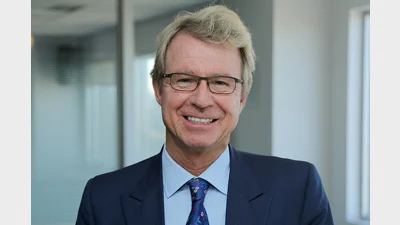Infrastructure investment attracts the attention of global pension players


Australian superannuation funds have enjoyed a first-mover advantage in the infrastructure investment space but, as Damon Taylor reports, the sector is now gaining the attention of global pension players.
Following a year in which Australia’s super industry has experienced far more than its fair share of reform, it is perhaps surprising to think that the Government’s 2014 reform focus could be elsewhere. Yet that is indeed the case.
With a Productivity Commission inquiry already underway, infrastructure investment is set to receive its own shake-up but for Brett Himbury, chief executive of IFM Investors, the super fund opportunities presented by such a study could not help but be compelling.
“Look, I think that generally speaking Australian super funds have been early adopters in the infrastructure market,” he said. “But even globally, we’re seeing a substantial pickup in interest in northern hemisphere pension fund markets.
“And there are good reasons for that interest,” Himbury continued. “In terms of infrastructure equity, it is a wonderful match to the long-term liabilities of Australian superannuation or global pension funds.
“But more than that, with risk-free rates around the globe at what, in many cases, are their lowest levels in a century, investors are clearly looking for strong and somewhat stable yields and those are characteristics that infrastructure can deliver.”
Outlining a similar role for infrastructure in super fund portfolios, Chris Trevillyan, senior consultant for Frontier Advisors, said that as an investment, it would always be viewed as relatively defensive.
“Our general view, is that infrastructure plays a relatively defensive role in the overall portfolio, while providing some growth upside,” he said. “It’s positioned somewhere between government bonds and equities on the risk/return spectrum and provides diversification as well as some inflation protection and cash yield.
“That said, it is very strategy and asset-specific, with some funds focused on higher growth active strategies, while others are targeting low risk, high yield investments.”
Yet for Clinton Wood, chief operating officer of Lighthouse Infrastructure, the final and perhaps most important reason for super funds’ interest in infrastructure was performance.
“Yes, clearly there was a bit of a trough and bubble pre-global financial crisis, and in my days as an analyst I saw some companies come and go just as quick as they came,” he said. “But if you take that as a bit of an anomaly, returns have been good.
“They’ve been anywhere between 10 and 15 per cent, depending on the asset class, counter-parties, stage and so on, and the reality is that those sort of returns are still available,” Wood continued. “So it certainly stacks up well, particularly when you’re talking 20-plus years duration.”
The bottom line, according to Himbury, was that the attention currently being enjoyed by infrastructure was hardly surprising.
“The track record that many people have got from infrastructure at a super fund and at a fund manager level has been a great complement to a balanced portfolio,” he said.
“And that’s both in terms of the quantum of the returns as well what has inevitably been lower volatility.
“So for me, infrastructure, both debt and equity, has a growing role to play in pension funds around the globe,” Himbury continued. “And it’s because of that match for liabilities, that growing history of attractive returns and finally, the diversification benefits that it continues to bring.”
Naturally, the attention garnered by infrastructure investment is about much more than yield, returns and asset allocation. Indeed, the benefits for various governments and society at large are equally impressive and for Trevillyan, such mutually beneficial outcomes are enticing.
“To begin with, the long-term productivity and economic growth benefits of investment in infrastructure received increased attention, largely in response to the global financial crisis,” he said.
“Government debt constraints increased the requirement for private sector investment in the sector, and so while globally private investment in infrastructure is relatively new, interest is increasing rapidly.
“In infrastructure, super funds and pension funds have the opportunity to invest in meaningful scale, in a long-dated investment without excessive management fees,” Trevillyan added.
“And with trillions and trillions of dollars forecast to be required in infrastructure maintenance and development, the potential size of the opportunity is enormous.”
Adding weight to Trevillyan’s comments, Himbury said that the need to improve the quality of the world’s economic and social infrastructure had never been greater.
“The reality is that most of the world doesn’t have the money to do it so most of the world is looking to the pension funds and the Australian superannuation system to fund those infrastructure needs,” he said.
“So there’s an enormous amount of interest from governments because they know they’ve got to improve their roads, their hospitals, their airports, their ports but they don’t have the financial capacity to do so in most countries.
“They’re therefore looking for private investment to do that,” Himbury continued. “And for governments the world over, pension funds represent an opportunity to get access to limited fiscal resources that are now less and less prevalent.
“It’s a simple equation; the world needs infrastructure, the world can’t afford infrastructure and so they’re looking to superannuation and pension funds globally to provide some of that funding gap.”
Of course any opportunity, no matter how great, comes with its own set of equivalent risks and hurdles. In the case of infrastructure, the most common risk, particularly following the global financial crisis, is liquidity, but according to Himbury the magnitude of that risk varies greatly fund to fund.
“Liquidity can, of course, be a factor but it does vary from fund to fund,” he said.
“That said, the Australian superannuation system is currently 9.25 per cent, it’s going to 12 per cent. We’re a relatively young demographic and all of the forecasts that we’ve seen is that there is a positive net cash flow expected in the Australian super system for the next 20 years.
“So in that sort of environment, I think encouraging people to be mindful of the liquidity restraints that are inherent in infrastructure is utterly reasonable but what I would also say is that perhaps there is also merit in being a little bit more courageous with regard to asset allocation,” Himbury explained.
“And I say that because infrastructure clearly has, in our experience, added to the net benefits of Australians and reduced the volatility of returns.
“So we’ve got the capacity in the Australian superannuation systems to be genuine long-term investors and we’ve also got the experience to suggest that if you’re cognizant of balancing liquidity requirements, infrastructure can deliver some great outcomes.”
Yet if liquidity is the first consideration when contemplating infrastructure investment, cost and scale are undoubtedly close seconds. Indeed, in what is an increasingly competitive superannuation environment, such issues are top of mind, and for Trevillyan there is undoubtedly a need to be discerning.
“Fee structure can include base fees, performance fees and/or share of carry,” he said. “But typically, Frontier super fund clients would be paying less than 1 per cent per annum all in management fees for infrastructure investment and in some cases significantly less.
“However, this is where there is a bit of a split because we’ve seen some of the newer offshore, private equity type funds charge as much as 2 per cent plus a 20 per cent performance fee,” Trevillyan continued. “And when you’re targeting low double-digit returns, we just don’t see that stacking up.”
And on the scale side of the equation, Wood pointed out that cost was no less topical.
“Look, the unavoidable reality is that infrastructure investment takes big teams and big commitments,” he said.
“Funds have really got to be $10 billion to $15 billion plus in size because if you go through the mathematics and work on the basis of a 5 to 10 per cent allocation, you really need $1 billion plus to make it worthwhile.”
Pointing to IFM Investors’ experience in 2013 as the example, Himbury said that they had been involved in three deals totalling $4 billion.
“So three deals, $4 billion, you can tell that on average, each deal is in excess of $1 billion,” he said. “And if you’re going to put that amount of money to work and you’re going to invest in things like a port that has a 99-year lease, you’re going to have to do a lot of really comprehensive due diligence.
“Investing $1 billion in one security with a 99-year lease requires an enormous amount of focus, resource and analytical due diligence, and so the reality is that there’s only a limited number of people who have the capacity to invest in the resources that are required to do that,” Himbury continued.
“So for better or worse, it’s likely to remain a scale game, and when it comes to fees at an absolute level, infrastructure has probably been at the more expensive end of the spectrum for that very reason.
“But that doesn’t mean that it doesn’t represent value.”
Bringing the discussion back to fees and cost, Himbury said that the Australian super industry had a rightful focus on extracting good value for money.
“Australia is very price sensitive and so it should be,” he said.
“At IFM, we’re owned by investors for investors and so our fees continue to be leading edge but unfortunately, I think there are still many instances where infrastructure fees are in favour of the manager rather than the client.
“There are some private equity fee models out there that I think need to disappear and they are gradually disappearing but at the same time, you do need to make sure that the manager that you’re paying has the capacity to continue to invest in its resources,” Himbury continued.
“People need to understand that infrastructure will inevitably be a more expensive asset class because of the nature of the analysis that’s required and the long-term nature of it.
“But by the same token, it needs to be highly competitive, with fees favouring investors’ interests.”
Strangely, the final hurdle for infrastructure investment has little to do with performance, internal resources or cost. Privatisation is, after all, an emotive topic and one not easily overcome, but for Wood, public concern and opposition is slowly but surely decreasing.
“It’s interesting. I moved to Melbourne 14 years ago and at that time NSW were desperately trying to sell their electricity poles and wires and gas.
“I then arrived in Melbourne and it was in a perilous state. Jeff Kennett was there and he and his trusty Treasurer, Allan Stockdale, basically structured and sold their utility and gas assets for a combined $26 billion,” continued Wood.
“But I don’t think anyone really argues that has been a bad thing because we’ve now got the lowest electricity network prices in Australia.”
The reality, according to James Hooper, Wood’s colleague and associate director of Lighthouse Infrastructure, was that when looking at a lot of Australia’s infrastructure assets, it was hard to argue that State governments were best placed to manage them but more importantly, governments were also running out of alternatives.
“The issue regarding the public perception of privatisation is that it’s not necessarily a question of whether the public is going to like it, it’s also a question of the alternatives,” he said.
“Worldwide we’ve seen nowhere near the spending increase on infrastructure as a percentage of GDP (gross domestic product) as you’ve seen in general government expenditure.
“And what that means is that infrastructure is falling behind and when infrastructure falls behind, it not only costs more and takes more time to fix to get it up to scratch, it’s also one of the easiest things to put on the backburner,” Hooper continued.
“So I think the fact that there has been less expenditure, that the growth in expenditure hasn’t met the expenditure which exists for other sectors of public spending, it’s all indicative of the fact that there is a need to turn to the private sector.
“And not surprisingly, governments have realised that.”
Alternatively, Himbury suggested that the privatisation hurdle was also reducing because of an increasing understanding of why infrastructure deals were taking place and who the asset owners would be at the end of the day.
“So the Port Botany and Port Kembla deal that we were involved with last year got a write-up in the Australian Financial Review as being the most influential deal of the year in Australia in 2013,” he said. “And they said that is because it changed the national debate around how to fund infrastructure.
“It wasn’t just the size of the deal or the scope of the deal or whatever else, it was a deal that, given the way in which the NSW Government structured it, really fundamentally shifted the debate,” explained Himbury.
“So I think the community is starting to understand that there are different forms of privatisation and I think they realise that the one that the NSW Government adopted – which was ‘we commit to selling an asset but we commit to very specifically recycling the proceeds of that sale back into the economic and social infrastructure that the community needs and selling it to responsible long-term owners who are going to adopt an appropriate long-term view and look after the needs of the employees, the investors, the regulators and so on’ – is a fantastic model.
“And most importantly, it’s a very different model to the one that has the opposition to it in the community.”
Indeed for Himbury, it is those sorts of deals which will define the future of infrastructure investment in Australia.
“I think the debate has shifted now and we’re looking forward to that shift happening globally because the world needs better infrastructure and it needs funding to do that,” he said.
“Whether it’s IFM or any of the other infrastructure managers out there, we’re not short of capital, we’re short on deals.
“So the more that this is better understood, hopefully the more transactions we’ll see and the better outcomes will be for our investors and for the world at large – with improved roads, ports, airports and so on.”
Recommended for you
Investors have slashed their US equity allocations to the lowest level on record, according to new data from Bank of America.
The message from experts in international trade and economists is that the Australian government should refrain from retaliating with reciprocal tariffs.
The market correction forecast by AMP’s chief economist is in full swing, with three weeks of turbulence culminating in significant losses on Tuesday.
Following a strong risk appetite in January, institutional investors have pulled back in February, with risk-seeking activity dropping to zero amid a decline in equity allocations.













